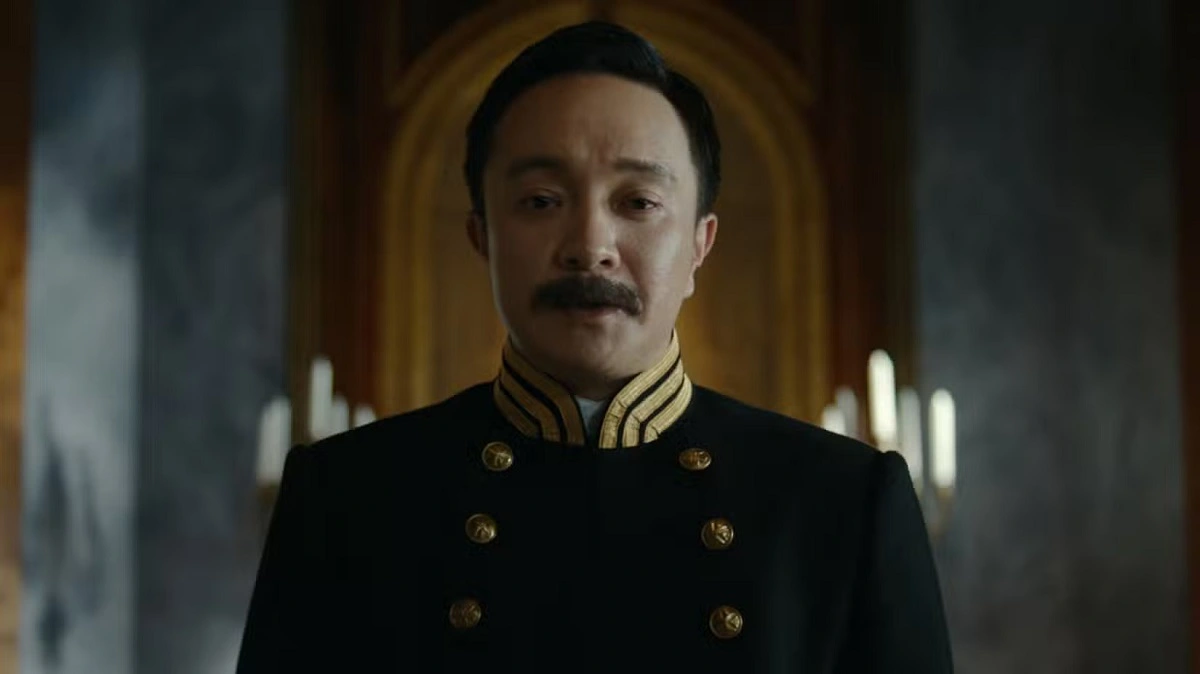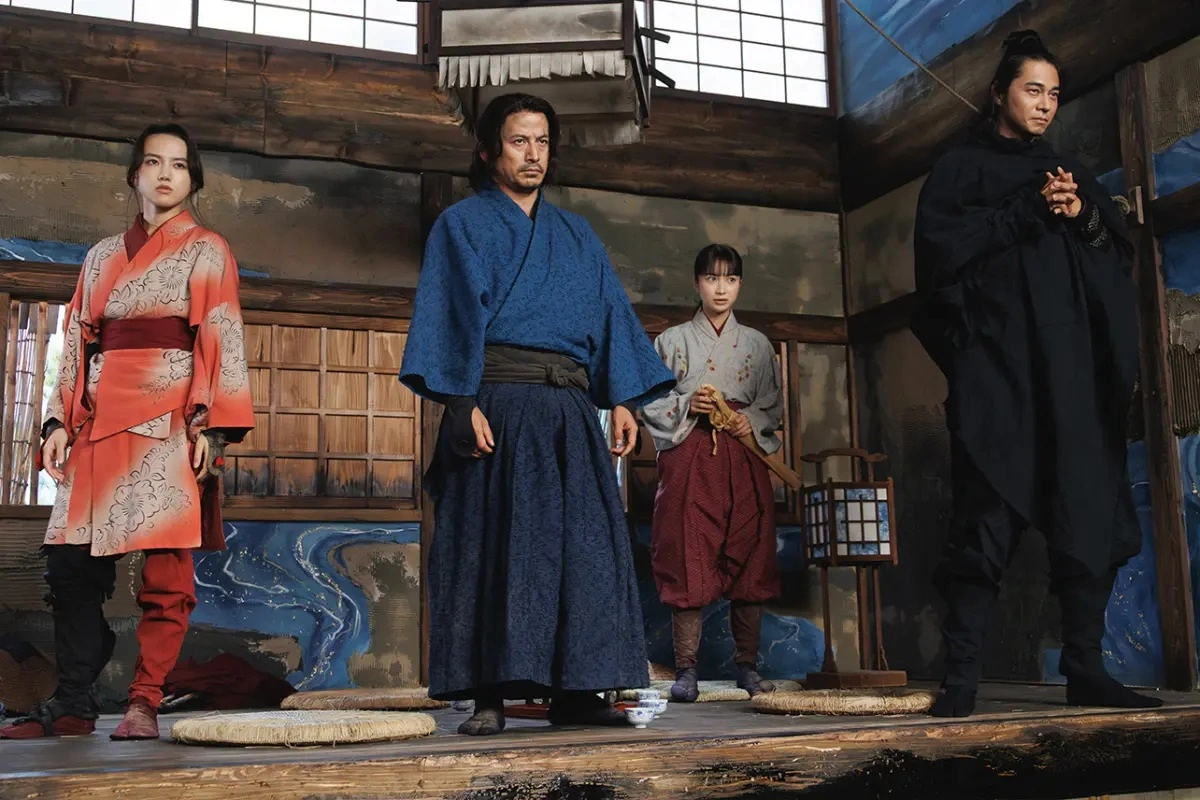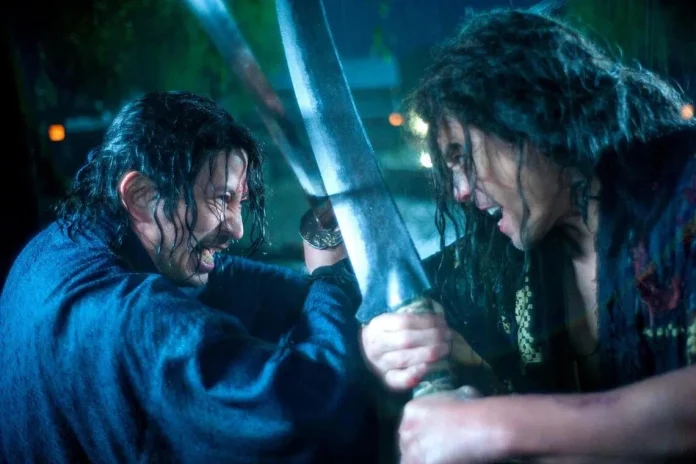Table of Contents
In Meiji-era Japan, Last Samurai Standing‘s former warriors gamble lives in deadly contest
From Akira Kurosawa to Masaki Kobayashi, and Rurouni Kenshin to Afro Samurai, of the countless historical and fictional Japanese films and TV shows that have been produced about the samurai class and feudal Japan, it is surprising that none were made with the same or similar premise as Netflix’s Last Samurai Standing.
As a cholera outbreak sweeps through Meiji-era Japan, former samurai Shujiro Saga (Junichi Okada) struggles to care for his sick wife and children due to the lack of an income and access to medicine.
When news pamphlets are distributed in his town calling for able-bodied samurai and warriors to congregate at the Tenryu-ji Temple in Kyoto to compete in a challenge and win ¥100,000, Shujiro makes a desperate decision to join.
However, at the temple, Shujiro and the other 291 warriors soon come to a startling realisation of the true nature of the competition, called a Kodoku – participants need to kill each other and collect the tags of the deceased to pass checkpoints on the way to Tokyo.

Merging death games, samurai tradition
Though “death games” have been done in Japanese entertainment media before such as both Battle Royale films and the recent Alice in Borderland series, while others such as Kurosawa’s Seven Samurai and Ran or the original 13 Assassins and its remake featured ensemble casts in giant samurai battles, Last Samurai Standing is the first to merge the core premise of both into one.
Adapted from Shogo Imamura’s novel into a brisk six-episode series, which by the end reveals that this is the first chapter in a multi-season series, Last Samurai Standing is impressive in scope, execution and creativity.
Directed by Michihito Fujii, with Okada also fulfilling roles as the series’ creative director and producer, Last Samurai Standing is a monumental series, beyond just how it balances a mountainous amount of characters and tells a story around them.
Its story also weaves a taut narrative involving themes of the dying samurai class, political intrigue, class warfare and socio-economic commentary during the Meiji Restoration transition from feudal to imperial rule.

Diverse cast driving high-stakes drama
Though a bulk of the 292 warriors are largely dispensable extras who exist either to fill the series’ corpse quota or pack the series with impressive swordplay and action sequences, the initial core cast of Shujiro, Futaba Katsuki (Yumia Fujisaki), Iroha Kinugasa (Kaya Kiyohara), Kyojin Tsuge (Masahiro Higashide), Bukotsu Kanjiya (Hideaki Ito), Gentosai (Hiroshi Abe), Toshimichi Okubo (Arata Iura) and Toshiyoshi Kawaji (Gaku Hamada) propel the series forwards through a combination of charisma, solid characterisation and strong performance.
Equally impressive is how the series juggles, expands and ties the various characters and their personal arcs without missing a beat in just six episodes.
For example, the series lead is Shujiro. He inevitably ends up protecting Futaba, a teenager who joins the competition due to the same cholera outbreak afflicting her mother and the children in her village.
This draws the attention of Bukotsu, a psychotic samurai that once clashed with Shujiro a decade ago. Shujiro’s adoptive sister Iroha and brothers have also joined the same competition, which draws Gentosai, a towering elderly samurai that has hunted the siblings from their teenage years due their shared past.
These barely scratch the surface of Last Samurai Standing’s epic breadth in storytelling and colourful characters, as there is also the secondary but equally critical storyline of the mysterious figures orchestrating the competition and their political goals involving the 292 warriors killing each other.
At the time of writing, Last Samurai Standing has yet to announce its renewal status for a second season despite it being a giant hit across critics and casual viewers. The network needs to strike the iron while it is hot, for the longer Netflix takes to draw its katana from the $$$-etched scabbard, the more agency the series will lose.
READ MORE:
Splinter Cell: Deathwatch Marks Sam Fisher’s Return







